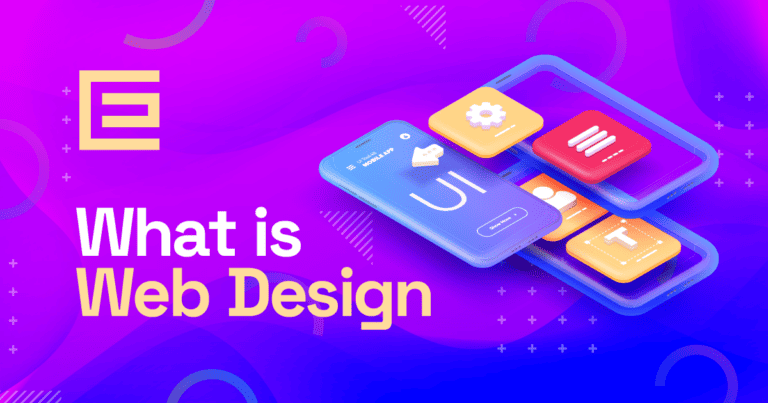Responsive Web Design (RWD) is a web development approach that creates dynamic changes to the appearance of a website, depending on the screen size and orientation of the device being used to view it. The primary goal of RWD is to ensure that users have a seamless viewing experience across a wide range of devices, including desktop computers, laptops, tablets, and smartphones. This design strategy is characterized by flexible layouts, fluid grids, and CSS media queries to adapt the website’s content and design to work on different screen sizes and resolutions.
The importance of responsive web design cannot be overstated in our increasingly mobile world. With a significant portion of web traffic coming from mobile devices, it’s crucial for websites to accommodate various screen sizes. A responsive design ensures that a site is accessible, usable, and aesthetically pleasing regardless of the device’s display. This adaptability improves user experience, enhances SEO efforts, and ensures that websites maintain a modern and professional appearance.
The concept of responsive design was first introduced by Ethan Marcotte in a 2010 article for “A List Apart.” Marcotte recognized the need for websites to adapt to the growing trend of mobile device usage. Before this approach became mainstream, the common practice was to design separate websites for mobile and desktop users, which was not only inefficient but also led to inconsistent user experiences. The introduction of RWD marked a significant shift in web design and development, leading to the universal practice of creating a single, flexible website that could respond to any device’s needs. This evolution has been driven by the rapid advancement of technology and the diversification of internet-connected devices, making responsive web design an essential standard for modern web development.

Core Principles of Responsive Web Design
Responsive web design is built on three foundational principles: fluid grids, flexible images, and media queries. These principles work in tandem to create a web experience that adjusts smoothly to different screen sizes and resolutions.
Fluid Grids
Fluid grids are a cornerstone of responsive design, allowing for layout flexibility that adapts to the user’s environment. Unlike traditional fixed-width layouts that use pixels to define dimensions, fluid grids use percentages. This means that columns and other layout elements are sized relative to one another and to the parent element, rather than to the viewport or device. As a result, the grid system becomes a proportional framework that scales up or down seamlessly, ensuring that the layout maintains its integrity and balance regardless of the screen size.
Flexible Images
Images can be a challenging aspect of responsive design due to their static nature. To overcome this, responsive web design employs flexible images that scale within their containing elements. The goal is to prevent images from displaying outside their container, which can break the layout or cause horizontal scrolling. This is typically achieved through CSS, with the max-width property set to 100%, ensuring that the image is never larger than its container. This technique allows images to shrink on smaller screens but remain clear and visible without altering their aspect ratio.
Media Queries
Media queries are the final piece of the responsive design puzzle, acting as condition checks for applying different styles based on the device’s characteristics, such as its width, height, orientation, and resolution. They enable designers to create multiple style rules in one stylesheet, which the browser can then apply only when certain conditions are met. For instance, a media query can be written to apply a different set of CSS properties when the screen size falls below a specific width. This allows for fine-tuning and control over how content is presented on various devices, ensuring that users get a design suited to their browsing context.
Together, these principles enable web designers and developers to create a single, unified web presence that can deliver a consistent user experience across a multitude of devices. By building on fluid grids, flexible images, and media queries, responsive web design meets the demands of the ever-changing landscape of device and display technologies.
Designing for Different Devices
The proliferation of internet-capable devices has introduced a variety of screen sizes and user interfaces, necessitating a thoughtful approach to web design that considers the unique characteristics of mobiles, tablets, and desktops.
Mobile, Tablet, and Desktop Considerations
When designing for mobile, the primary focus is on minimalism and efficiency due to the limited screen real estate. Mobile design must prioritize essential content and functionality, presenting users with a clear path to the most important actions and information. Navigation is typically streamlined into a single-column layout, and interactive elements are sized to be easily tappable with a finger.
Tablet design bridges the gap between mobile and desktop, offering more space for content while still considering the touch interface. With tablets, there’s a balance to be struck in utilizing the additional screen space without overloading the user. Multi-column layouts become more feasible, and there’s room for enhanced interactivity and richer media, which can be comfortably consumed on larger tablet screens.
Desktop websites can afford to display more content and complex structures due to the expansive screen size. They can include multiple columns, larger graphics, and more detailed information without the same constraints as mobile devices. However, it’s crucial to maintain consistency in the overall design language and content hierarchy across all platforms to provide a coherent brand experience.
Touchscreen vs. Mouse/Keyboard Inputs
Designing for touchscreens requires an understanding of how finger-based interaction differs from mouse and keyboard inputs. Touch targets need to be larger and more spaced out to prevent errors, and gestures like swiping and pinching should be considered in the interface design. Hover states, which are a staple of desktop browsing, do not translate to touchscreens and must be adapted or abandoned in favor of touch-friendly alternatives.
Conversely, when designing for mouse and keyboard inputs, precision is less of a concern, and more emphasis can be placed on hover effects, right-click menus, and keyboard navigation. The user’s ability to interact with smaller elements and utilize keyboard shortcuts can lead to more complex interactions and a greater depth of functionality within the design.
In short, responsive web design must cater to the nuances of each device type, ensuring that the user experience is optimized for the way people interact with content across different platforms. By considering the specific needs and capabilities of mobiles, tablets, and desktops, designers can create versatile, user-friendly websites that serve their audience effectively, no matter how they choose to access the web.
Challenges in Responsive Web Design
Responsive web design, while solving a multitude of problems associated with multi-device support, brings its own set of challenges. Among these are navigation complexity, load times, and cross-browser compatibility, each requiring careful consideration and strategic planning to overcome.
Navigation Complexity
One of the most significant challenges in responsive design is creating a navigation system that works well on various devices. On a desktop, there’s ample space for horizontal navigation with multiple levels of dropdown menus. However, this structure doesn’t translate well to smaller screens, where space is at a premium, and dropdowns can be cumbersome to use. Designers must therefore devise innovative ways to condense navigation without sacrificing user accessibility. This often involves using hamburger menus, accordion systems, or priority+ patterns to keep navigation intuitive and user-friendly across all devices. The complexity increases when trying to maintain the depth and breadth of a site’s navigation while ensuring it remains functional and not overwhelming on a small screen.
Load Times
Responsive websites often serve the same content across devices, but the bandwidth and processing power available on mobile devices can be significantly less than on desktops. High-resolution images and complex scripts that load quickly on a desktop with a high-speed connection can lead to longer load times on mobile devices. To address this, responsive designs must be optimized for performance, which can involve techniques like responsive image loading, where images are served at different resolutions based on the device’s capabilities, or conditional loading, which only loads certain assets on devices where they’re necessary. Ensuring that the user experience is swift and responsive on all devices is a delicate balancing act that can have a profound impact on user satisfaction and SEO.
Cross-browser Compatibility
The variety of web browsers in use today means that a website can be accessed through a multitude of rendering engines, each with its own quirks and interpretation of web standards. A design that looks and functions perfectly in one browser may not work as intended in another. This issue is compounded in responsive design, where layouts and features must not only work across different browsers but also adapt to different screen sizes and resolutions within those browsers. Designers and developers must rigorously test their work on multiple browsers and devices to ensure compatibility, which can be a time-consuming and technically demanding process. The use of progressive enhancement and graceful degradation strategies helps in building a robust web presence that can serve the widest possible audience without compromising on functionality or aesthetic appeal.
While responsive web design is essential for modern web development, it requires a proactive approach to navigation design, performance optimization, and cross-browser testing to ensure a quality experience for all users. Addressing these challenges is critical to the success of any responsive website.
Tools and Frameworks
The development of responsive websites is facilitated by a variety of tools and frameworks designed to streamline the process and ensure consistency across different devices. Among the most popular are CSS frameworks like Bootstrap and Foundation, as well as testing tools such as Chrome DevTools and BrowserStack.
CSS Frameworks: Bootstrap, Foundation
Bootstrap is one of the most widely used open-source CSS frameworks. It provides a grid system, pre-designed components, and powerful plugins based on jQuery. Its responsive features are straightforward to implement, making it a favorite for developers looking to build responsive sites quickly and efficiently. Bootstrap’s grid system adjusts the layout content based on predefined breakpoints, ensuring that the design is mobile-friendly and adaptable to various screen sizes.
Foundation, another leading responsive design framework, is known for being advanced and flexible. It offers a similar grid system to Bootstrap but with a greater emphasis on mobile-first design. Foundation is particularly noted for its semantic approach to building layouts and its versatile set of tools that cater to more complex design needs. It also includes a variety of plugins and elements that are responsive out of the box, with the flexibility to create more customized solutions.
Testing Tools: Chrome DevTools, BrowserStack
Chrome DevTools is a set of web developer tools built directly into the Google Chrome browser. It provides developers with the means to inspect and modify the DOM, debug JavaScript, and optimize website speed. One of its standout features for responsive design is the device mode, which allows developers to test how their websites will look and function on different devices, screen sizes, and resolutions without needing the actual hardware.
BrowserStack is a cross-browser testing tool that enables developers to test their websites on a wide range of browsers and devices. It offers live, interactive testing on desktop and mobile browsers on various operating systems. This is invaluable for ensuring that a website delivers a consistent experience across all user platforms. BrowserStack’s real device cloud can simulate a multitude of user interactions and conditions, providing an accurate assessment of a website’s responsive capabilities.
These tools and frameworks are essential for any web developer aiming to create responsive websites that offer a seamless user experience. By leveraging the strengths of CSS frameworks for building the site and utilizing robust testing tools to ensure compatibility and performance, developers can significantly reduce the time and effort required to launch a responsive website.
HTML/CSS Techniques for Responsive Design
Responsive web design relies heavily on various HTML and CSS techniques to ensure that websites look and function correctly across all devices. Among these techniques, the use of relative units for sizing and media queries for conditional styling stand out as fundamental to creating flexible and adaptable web pages.
Relative Units (em, rem, vw, vh)
Relative units in CSS such as em, rem, vw (viewport width), and vh (viewport height) are essential for creating scalable designs. Unlike fixed units like pixels, relative units adjust sizing based on other factors, such as the parent element’s font size or the dimensions of the viewport, which makes them ideal for responsive design.
- em is relative to the font size of the element, allowing for scalability based on the user’s text size preferences.
- rem is similar to em but is always relative to the root—or the html—element, which provides consistency in scaling across different elements.
- vw and vh are relative to the size of the viewport: vw is based on the width, and vh is based on the height. This means that 1vw is equal to 1% of the viewport’s width, and 1vh is 1% of the viewport’s height, making these units perfect for creating layouts that adapt to the screen size.
Media Query Syntax
Media queries are a powerful feature of CSS that enable the application of styles to specific devices based on attributes like width, height, resolution, and orientation. The syntax for media queries is straightforward:
@media (max-width: 600px) {
/* styles for screens smaller than 600px */
}
@media (min-width: 601px) and (max-width: 1200px) {
/* styles for screens between 601px and 1200px */
}
@media (min-width: 1201px) {
/* styles for screens larger than 1201px */
}This syntax allows developers to write custom CSS that targets devices with screens within certain size ranges, ensuring that the design adapts to different viewing contexts.
Example Code Snippets
Here are some example code snippets that demonstrate the use of relative units and media queries in responsive design:
/* Base font size for document */
html {
font-size: 16px;
}
/* Using 'rem' for padding */
.container {
padding: 1rem; /* 1rem = 16px */
}
/* Using 'vw' to size elements */
.h1 {
font-size: 5.9vw; /* Dynamically size text to be 5.9% of the viewport width */
}
/* Using 'vh' for full viewport height sections */
.full-height-section {
height: 100vh; /* Section will be the full height of the viewport */
}
/* Media query to adjust base font size on larger screens */
@media (min-width: 768px) {
html {
font-size: 18px; /* Increase base size for larger screens */
}
}
/* Media query to adjust layout for tablets */
@media (min-width: 768px) and (max-width: 1024px) {
.navigation {
padding: 2rem; /* More padding on larger devices */
}
}
/* Media query for desktops */
@media (min-width: 1025px) {
.sidebar {
width: 250px; /* Fixed width sidebar on large screens */
}
.content {
margin-left: 250px; /* Content pushed right to make space for sidebar */
}
}
These snippets provide a glimpse into the responsive design’s coding practices, showcasing how relative units and media queries can be used to create designs that adapt to the user’s device, improving accessibility and user experience.
Advanced CSS Features for Responsive Design
Responsive web design has evolved with the advancement of CSS, leading to more sophisticated layouts and better control over how content is displayed. Advanced CSS features like Flexbox, CSS Grid, and Feature Queries have become instrumental in building responsive designs that are both flexible and efficient.
Flexbox
Flexbox is a layout module that makes it easy to design a flexible and efficient way to lay out, align, and distribute space among items in a container, even when their size is unknown or dynamic. Flexbox gives the container the ability to alter its items’ width/height (and order) to best fill the available space (mostly to accommodate to all kind of display devices and screen sizes). A flex container expands items to fill available free space or shrinks them to prevent overflow.
Here’s a basic example of using Flexbox:
.container {
display: flex; /* Defines a flex container */
justify-content: space-between; /* Distributes space between items */
align-items: center; /* Aligns items vertically */
}
.item {
flex-grow: 1; /* Allows the item to grow to fill space */
}
Flexbox’s main axis and cross axis are fundamental concepts within the layout model, providing a consistent organizational structure when designing responsive layouts.
CSS Grid
CSS Grid Layout is a two-dimensional layout system for the web. It lets you create grid structures that are previously impossible or very complex with classic CSS. It’s particularly useful for designing web applications and complex, asymmetrical layouts. CSS Grid allows you to create grid structures with rows and columns, and place content into them in a very clean and straightforward manner.
Here’s a simple CSS Grid example:
.grid-container {
display: grid; /* Defines a grid container */
grid-template-columns: repeat(3, 1fr); /* Creates three columns of equal width */
grid-gap: 10px; /* Sets the gap between rows and columns */
}
.grid-item {
/* Styles for grid items */
}With grid-template-areas, you can even create named areas in your CSS Grid layout to place headers, footers, and sidebars, making the layout more readable and maintainable.
Feature Queries
Feature Queries, also known as @supports, is a CSS rule that allows you to use a block of CSS properties only if a certain condition is true. This is particularly useful for progressively enhancing your website to support newer CSS features in browsers that can use them, while providing fallbacks for older browsers.
An example of using Feature Queries:
@supports (display: grid) {
.container {
display: grid;
}
.item {
/* Grid-based item styles */
}
}
@supports not (display: grid) {
.container {
display: flex; /* Fallback for browsers that don't support CSS Grid */
}
}By using Feature Queries, developers can write a block of CSS that will only apply if the browser supports a particular feature, such as CSS Grid. This ensures that the website remains functional and looks good in all browsers, while still taking advantage of the latest developments in CSS when possible.
These advanced CSS features empower web designers and developers to create more robust, flexible, and sophisticated layouts that can adapt to any screen size, improving the overall responsiveness of web design.
Responsive Typography
Typography is a critical element of design that greatly affects usability and aesthetics. In responsive web design, typography must be adaptable to various screen sizes and resolutions to ensure readability and accessibility. Responsive typography involves using scalable text sizes and considering the readability on different devices.
Scalable Text Sizes
Scalable text sizes use relative units for font sizes rather than fixed units. This allows the text to scale based on the size of the screen or the parent element’s size. CSS offers several units for scalable typography, with em and rem being the most popular. While em is relative to the font size of its parent, rem is related to the root element’s font size, which provides a consistent reference point across the document.
Using viewport units like vw (viewport width) and vh (viewport height) can also create responsive text that scales dynamically with the viewport size. For example, setting a headline to 2.5vw would ensure that it always takes up a percentage of the viewport width, thus maintaining its proportion relative to the rest of the page.
Readability on Different Devices
Readability on different devices is not just about scaling text size but also about considering the line length, line height, and contrast. Long lines of text can be hard to follow on a wide screen, while too short lines can disrupt the reading flow on a small screen. A general rule of thumb is to aim for 45 to 75 characters per line for optimal readability.
Line height (line spacing) also needs to be adjusted for different devices. On smaller screens, tighter line spacing can make text blocks look dense and overwhelming. Increasing line height improves legibility and readability by giving individual lines of text more room to breathe.
Contrast is another important factor that affects readability. Text color should contrast well with the background to be easily readable on all devices. This is especially important on mobile devices that may be used in a variety of lighting conditions.
Responsive typography ensures that text content is not only legible and readable across all devices but also contributes to a seamless and harmonious user experience. By carefully considering scalable text sizes and readability factors, designers can create a textual presentation that both engages and informs the audience effectively, regardless of how they access the web.
SEO and Responsive Design
The relationship between SEO (Search Engine Optimization) and responsive web design is integral to the success of any website. Search engines like Google have adapted their algorithms to account for the user’s experience on mobile devices, with mobile-first indexing being a prime example. Additionally, page speed has become a crucial factor in SEO, affecting not only rankings but also user engagement and conversion rates.
Mobile-first Indexing
Mobile-first indexing means that Google predominantly uses the mobile version of the content for indexing and ranking. Since the majority of users now access Google via a mobile device, the search engine wants to make sure they are getting the most optimized content for their experience. This shift has made responsive design an SEO necessity rather than a choice. Websites that are not mobile-friendly may see a significant drop in their search rankings. To comply with mobile-first indexing, sites must have responsive design elements that adjust smoothly to smaller screens, ensuring that mobile users receive the same quality of content as desktop users.
Page Speed Factors
Page speed is another critical factor in SEO that is deeply connected to responsive design. Websites that load quickly on all devices tend to rank higher in search results. Responsive design contributes to faster page speeds by allowing developers to implement mobile-specific features, such as conditional loading, which only loads the assets necessary for the mobile version of the site. Other techniques, like optimizing image sizes and utilizing server-side compression, can also improve loading times.
The use of AMP (Accelerated Mobile Pages) is another way to enhance page speed for mobile users. AMP is an open-source framework that allows for the creation of fast-loading web pages optimized for mobile devices. By prioritizing speed and simplicity, AMP can significantly improve the mobile browsing experience, which in turn can lead to better search engine visibility and higher user engagement.
Incorporating responsive design is not only about adjusting the layout to fit various screen sizes but also about optimizing the overall performance of a website. By focusing on mobile-first indexing and page speed factors, webmasters can ensure their sites meet the demands of modern users and search engines alike, leading to improved SEO, higher traffic, and better engagement.
Tags: Questions & Answers • Web Design







